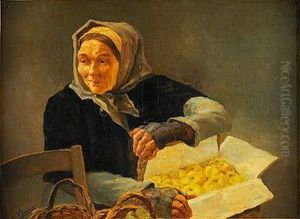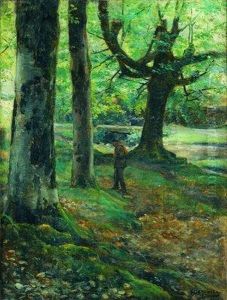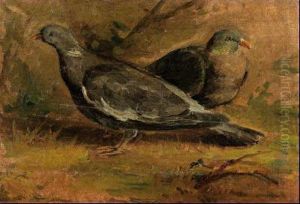Vicente Berrueta Paintings
Vicente Berrueta is a name less familiar in the broad panorama of art history, yet his contributions and the context of his work offer a unique glimpse into the artistic developments of his time, particularly within the Spanish art scene. Born in 1874 in Spain, Berrueta's life and career were set against the backdrop of a country rich in cultural heritage and undergoing significant social and political changes. His era was marked by the complexities of the fin-de-siècle period, a time of both aesthetic innovation and a search for national identity within the arts.
Berrueta's artistic journey was reflective of the broader trends in European art during the late 19th and early 20th centuries, exploring themes of realism, impressionism, and the beginnings of modernist expressions. While specific details of his education and early influences are less documented compared to his more renowned contemporaries, it is evident that Berrueta's work was in dialogue with the predominant currents of Spanish art of the time, drawing from and contributing to the rich tapestry of Spain's visual culture.
Throughout his relatively short career—Berrueta died in 1916 at the age of 42—his output demonstrated a commitment to capturing the essence of his subjects with a keen eye for detail and a profound sense of emotionality. Whether in his landscapes, portraits, or scenes of everyday life, Berrueta's paintings exhibit a sensitivity to light and color that aligns him with the impressionist movement, though his work often hinted at the more introspective and subjective tendencies that would come to define modern art.
Despite his early death, Vicente Berrueta's legacy is preserved in the collections of Spanish museums and among private collectors who appreciate the quiet intensity and beauty of his work. While not as widely recognized as some of his peers, Berrueta's contributions to the development of Spanish art provide valuable insights into the transition from traditional to modernist art forms. His life and work remain a subject of interest for art historians and enthusiasts seeking to understand the nuanced evolution of European art at the turn of the 20th century.


